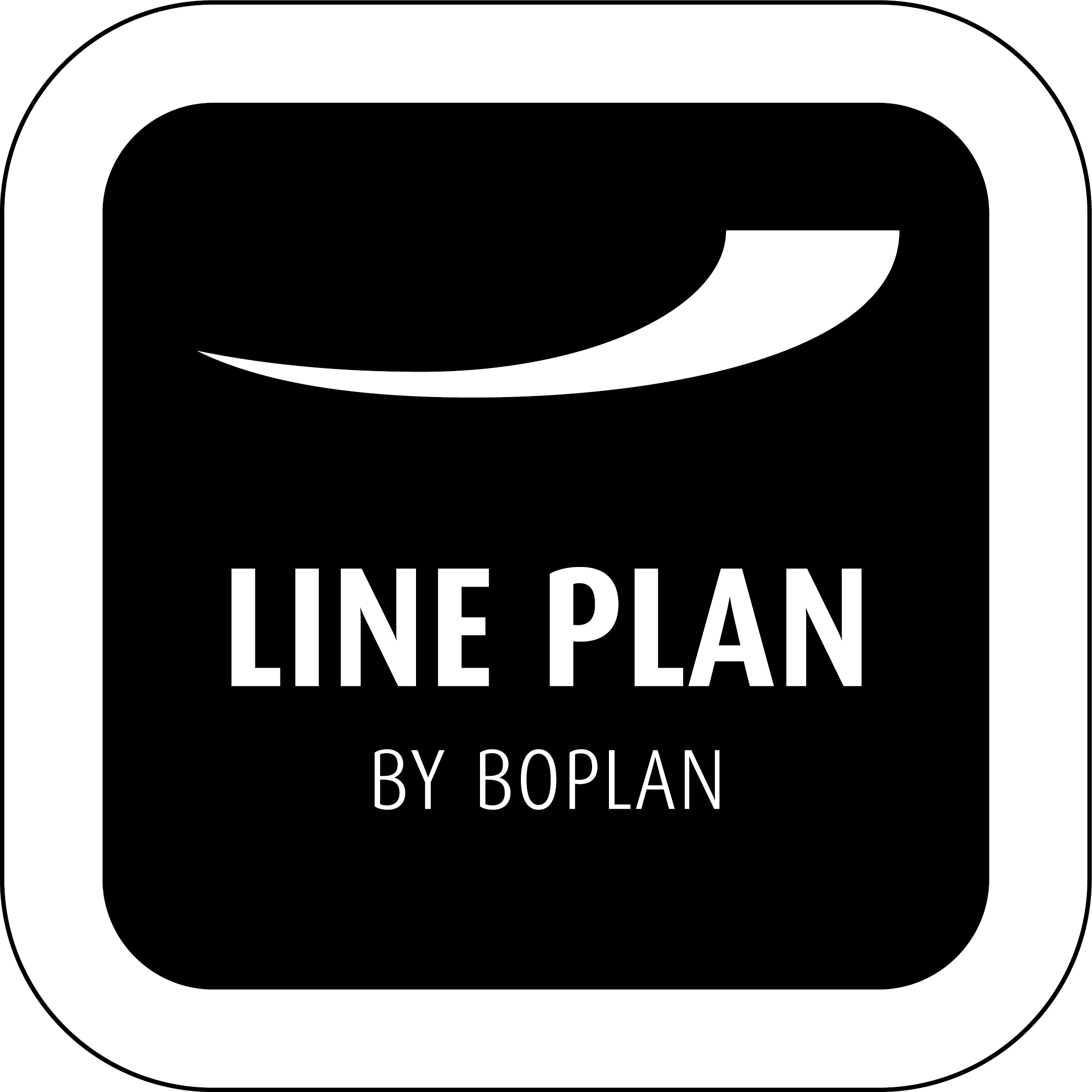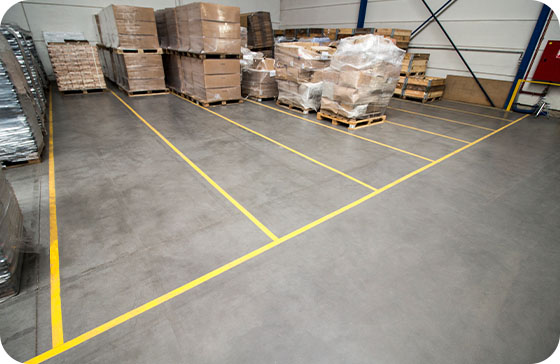In order to put a traffic safety plan into practice, some visual elements need to be added. One simple way to do this is to lay out floor marking tape in the warehouse. By using marking tape, you can indicate a clear separation between pedestrians and vehicles. This will prevent collisions with a forklift and you also create a safer work space this way.
Our floor marking tapes are indestructible and have all you need to provide your warehouse with signposting that stands out. With the LINE PLAN range, you will find among other things, high-quality floor marking tapes and various types of markers. Available in a variety of colours and patterns, these floor marking tapes resist every form of friction like no other product can.
LINE PLAN floor marking tapes provide a neatly defined and safe work environment. This adhesive is also suitable for all types of surfaces and is extremely resistant to a wet, slippery floor.
Would you like to make your working environment even safer with the help of physical barriers? We have a range of fail-safe crash barriers in various forms: crash protection made from plastic, safety posts, safety fences with gates, protective skirting boards… To protect your vehicles against possible damage from sharp corners, we also offer column and corner protection. Are you also looking for a way to avoid slippery stairs and floors? Then be sure to discover our XTRA GRIP range.







